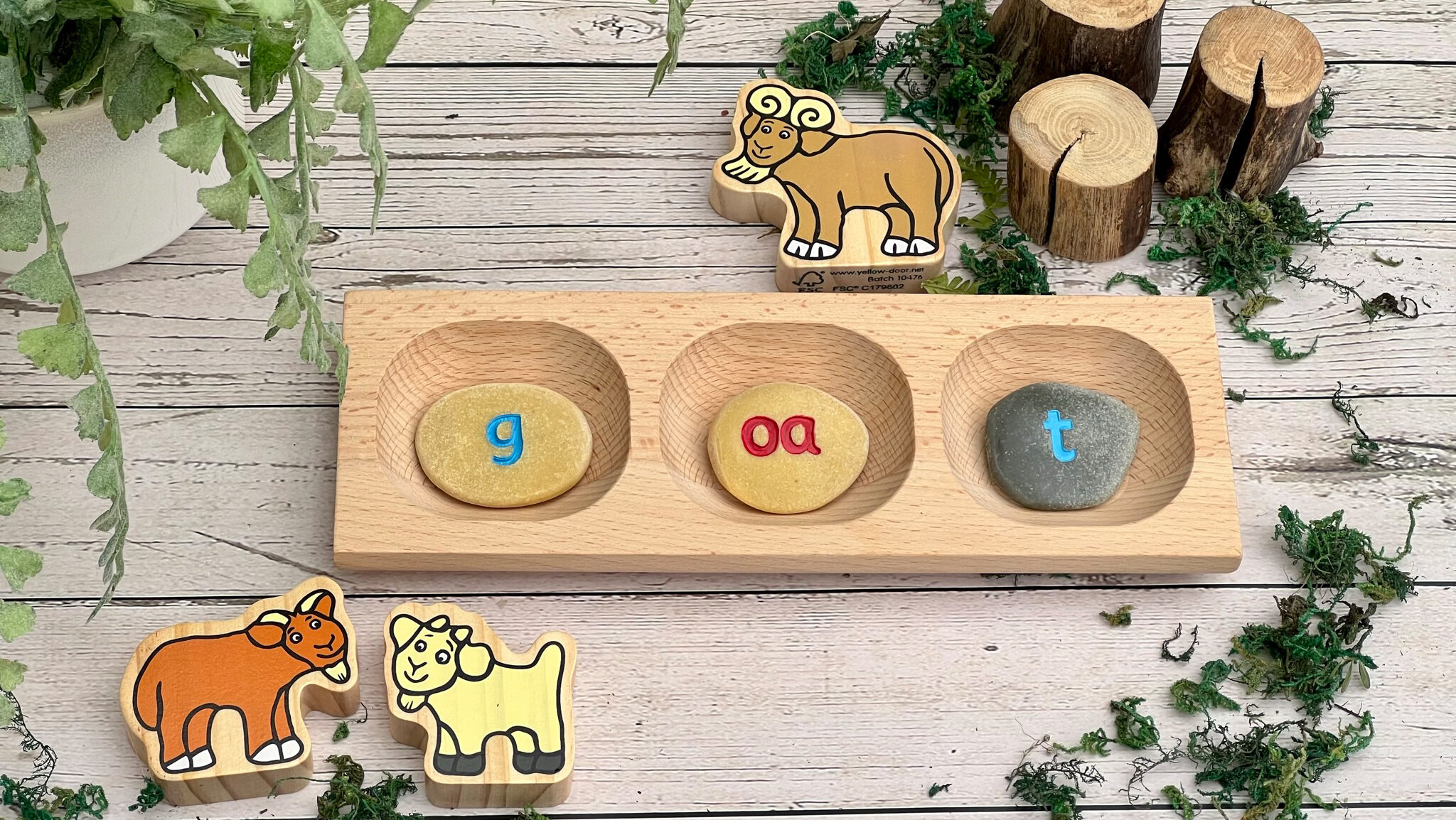Get the most out of our Phonics Pebbles with these great ideas and activities from teacher and consultant, Christine Barker.
It is important for children to begin segmenting and blending simple VC and CVC words early in their phonemic development, and to continue practising this skill. As digraphs and trigraphs are introduced, children will more easily see how phonemes work together to make one sound. The Phonics Pebbles help with this as each phoneme is on a single pebble.
The pebbles can be used for simple wordbuilding games, such as the ones that follow.
Make the word
Choose a selection of objects containing the focus phonemes and place them in a bag. Feel one object and orally segment its name. Ask the children to blend the phonemes and say the word. If they are correct, show them the object. Segment the word again, this time asking the children to help you find the pebble for each sound from a selection. Build the word by placing the stones next to each other in a line, emphasising left to right directionality. Blend the sounds together to read the word. If it is not correct, ask the children to listen carefully as you orally segment and blend the word again. Continue in the same way with the other objects in the bag, allowing the children to take the lead. See if they can work together to find the correct phoneme(s). Model segmenting and blending each time, asking the children to join in.
Take it outside!
This game is easily transferred to the outdoor area. Draw a large frame on the floor, with each section large enough for a child to stand in. Leave a basket of objects and a pile of phonics pebbles alongside the grid. Children choose an object and say the word, then segmenting to work out the phonemes it consists of. They then find the corresponding pebbles in the basket and place them in a row from left to right on the frame in the correct order. They can then jump along the frame, saying the phonemes and blending them to read the word they have made.
Alternatively, leave small piles of pebbles around the outdoor area for the children to build words. Clipboards could be available so they can record what they have done and read back the real and nonsense words they have created. Adding an egg timer gives an extra challenge. How many words can they make in five minutes? Can they read all the words on their list? Can they sort the real and nonsense words?
Pebbles and reading
Phonics Pebbles can be used alongside reading to introduce the focus phoneme(s) in a book and to build some of the words children will find in the text. This could be particularly useful when children are being introduced to alternative spellings.
Once the children have been taught how to play the games above, it is important to leave the resources out so that they can practise independently. This also provides good opportunities for assessment.
Find out more about our Phonics Pebbles.

